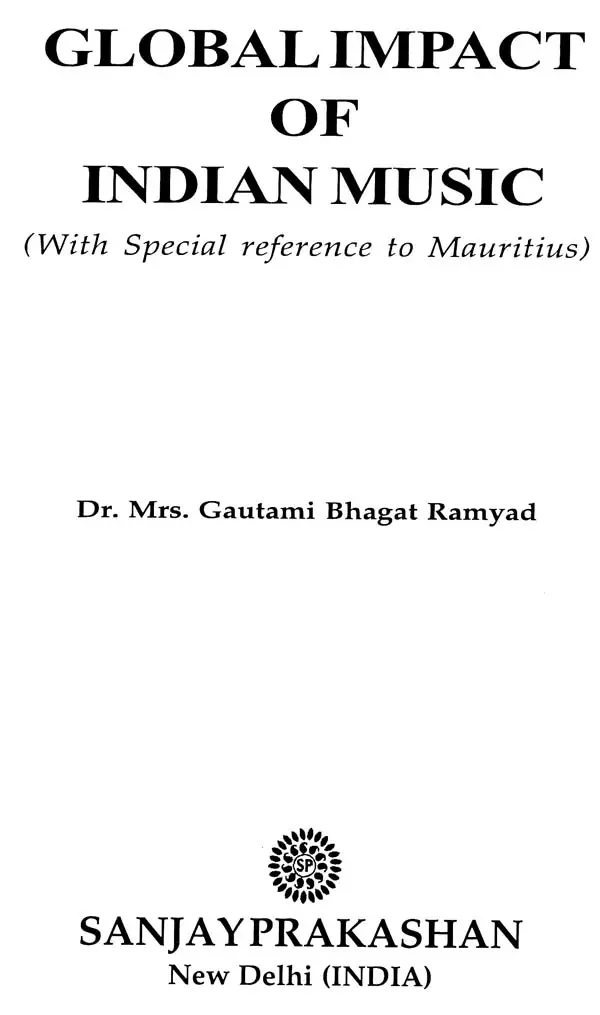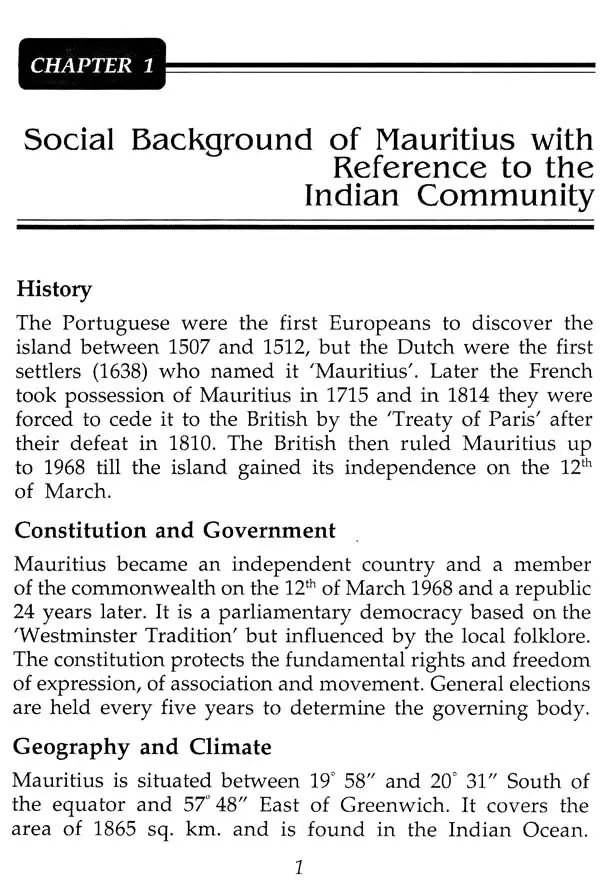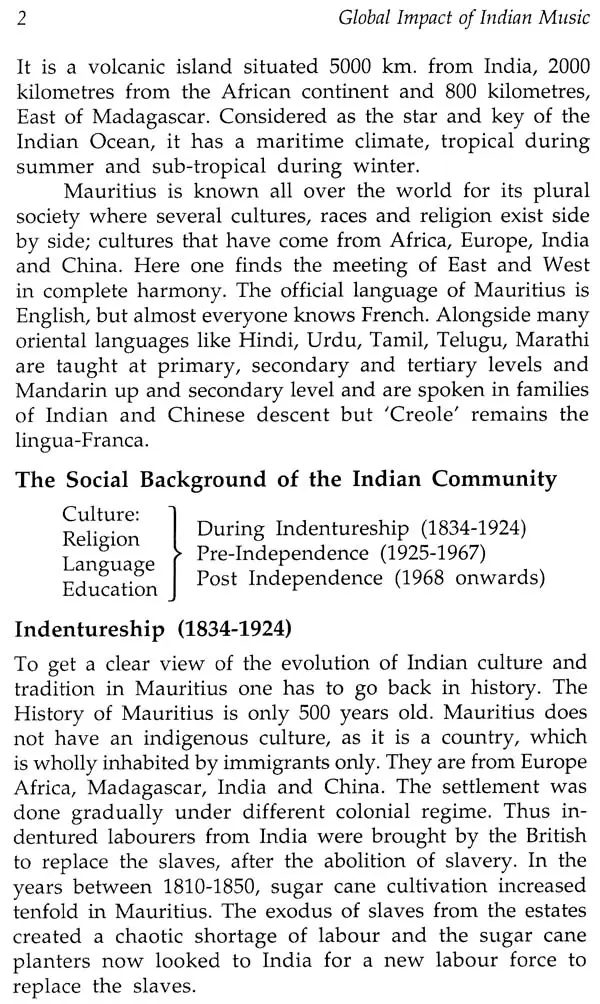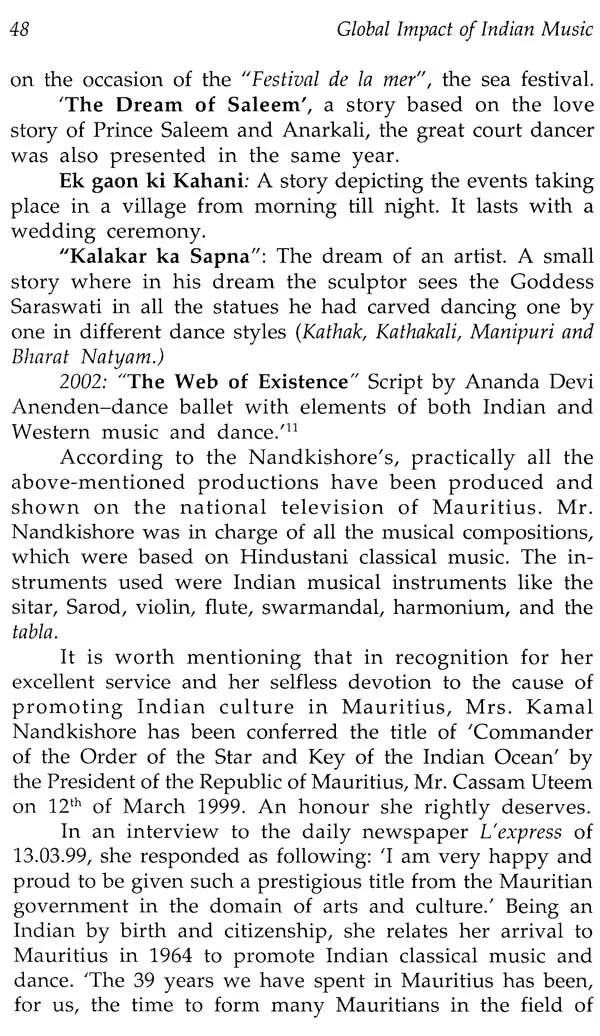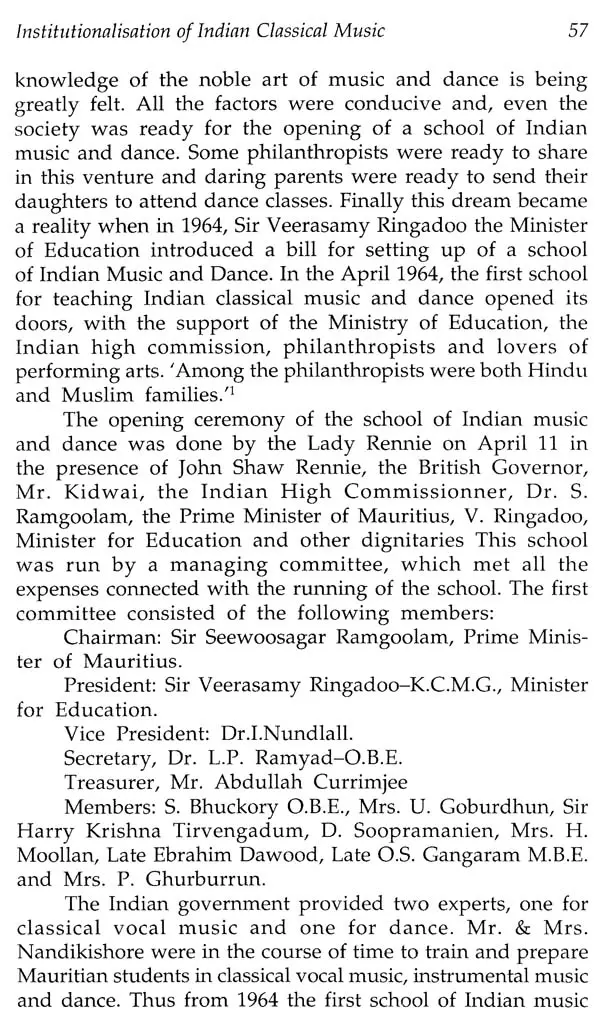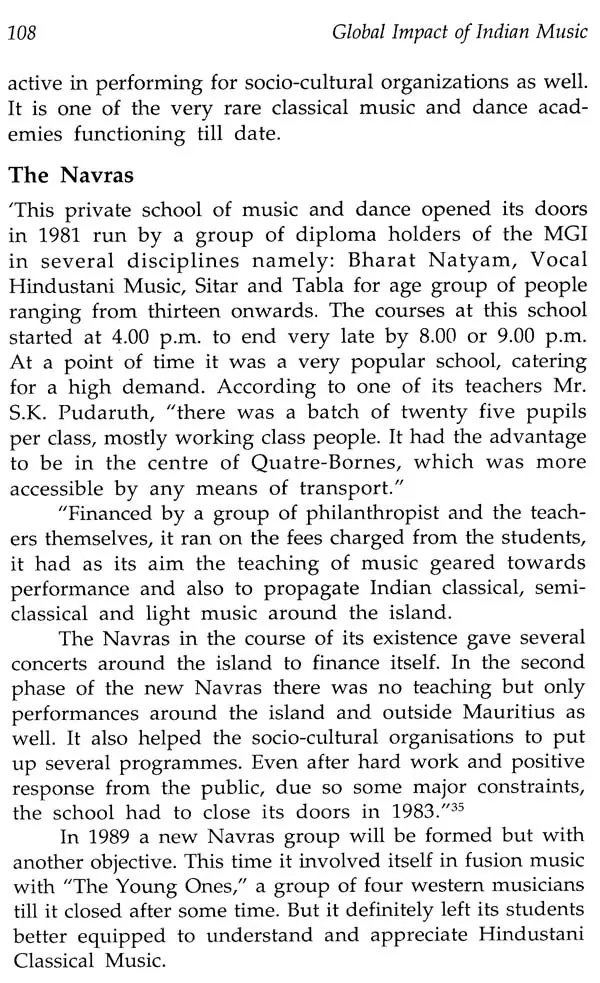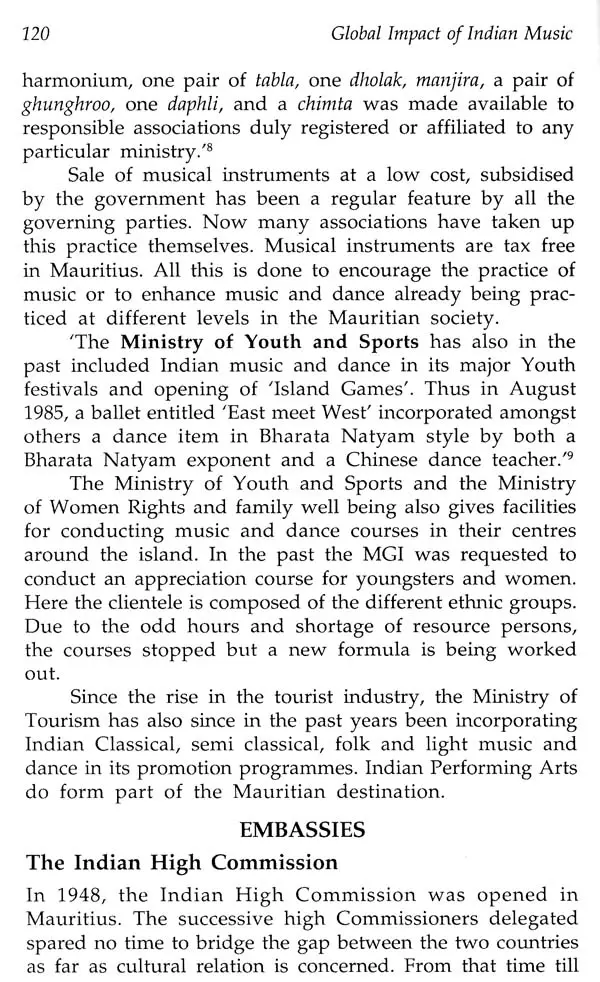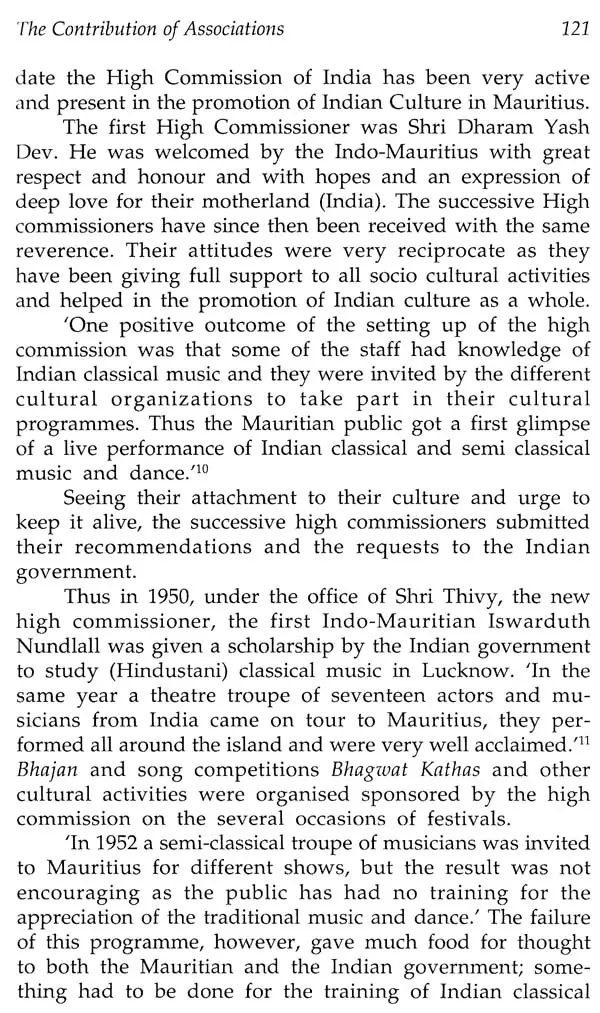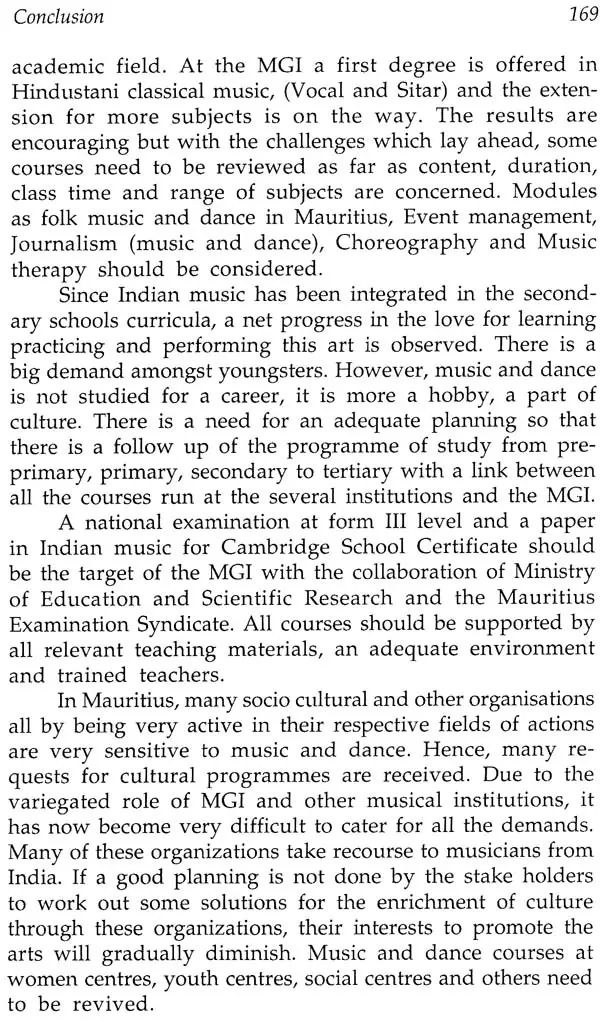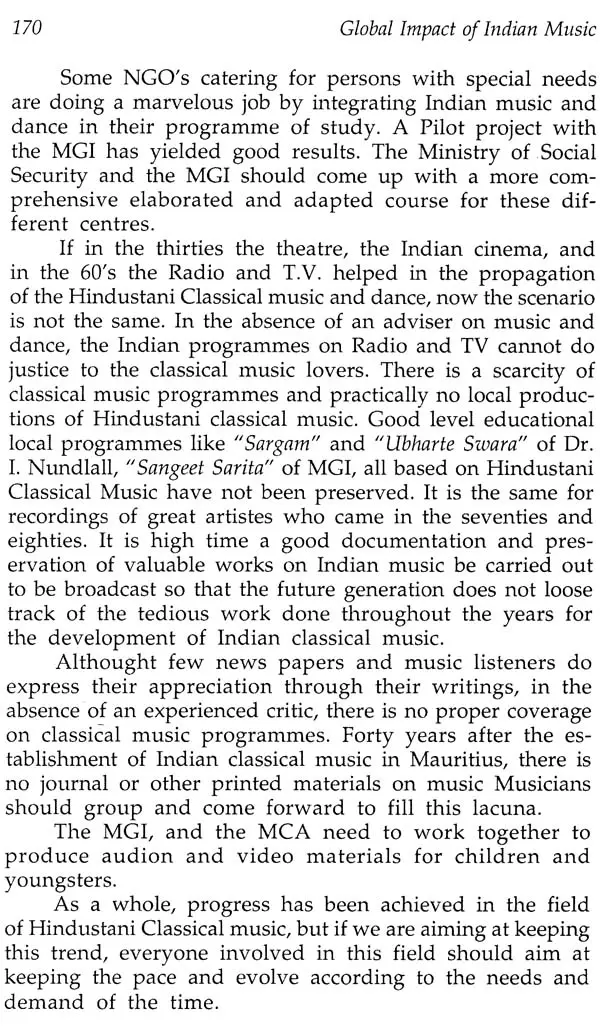
Global Impact of Indian Music (With Special Reference to Mauritius)
Book Specification
| Item Code: | UAH855 |
| Author: | Gautami Bahgat Ramyad |
| Publisher: | Sanjay Prakashan |
| Language: | English |
| Edition: | 2018 |
| ISBN: | 9788174532992 |
| Pages: | 185 |
| Cover: | HARDCOVER |
| Other Details | 9.00 X 6.00 inch |
| Weight | 420 gm |
Book Description
"Music in India is also believed to be the best medium that leads. seekers of truth to divine knowledge. Music enlightens the soul to realise the purpose and value of life. As in all primitive culture early music in India mainly consisted of war songs, work songs, ballads, ritual dances. Primitive music was mainly functional. It was high pitched, monotonous and recitative, but gradually more times and movements were added to create the fast music and dance-Singing and dancing was therefore the spontaneous and simple outbursts of the sweet thoughts of the primitive man."
"If their songs included love songs, songs of lamentation, songs of medicine, weather charm etc. they used as sound producers some sort of pipes, crude types lutes out of bamboo and bone and other products of nature. Earliest reference known about Indian music leads to two schools of thought. According to Swami Prajnanananda in his book 'History of Indian Music', "Music and dance developed in different ways in temples and among the commons in the form of folk music and for entertainment."
If on one side, music emerged from the concepts of tone, tunes along with rhythm giving rise to microtones (shrutis), tones, the registers (Saptaks), scales (thatas) and the concept of melodies (Raga), their classifications and their compositions along with musical instruments came later.
"Another belief is attributed to the fanciful legends of Gods and Goddesses who are supposed to be the authors and patrons of the performing arts. Goddess Saraswati is always represented as the Goddess of Art and learning, pictured with a veena in her hands. God Shiva is supposed to have been the creator of this three-fold art of sangeet, which include singing, dancing, and playing of instruments. Narada Muni who wandered between earth and heaven then taught this art to men."
But when my children grew up, and with the impact of globalised education and modernism, I had to ensure at each and every level of their life, that the ties and remnants of Hindi, Indian culture and Arts grow with them.
It was then that I realised that with the evolution of society, Indian music and culture has evolved. There should be a reference of what it was and what it is, to make the new generation aware of the essence and importance of preserving the tradition.
For my Ph.D., I chose as topic, 'Hindustani Classical Music in Mauritius-a Historical Perspective' to dig into the evolutionary aspect of the origin and development of Hindustani classical music in Mauritius. I found that history has lots of achievers and as a tribute to them. I decided to publish my research into a book, dedicated to the past, present and future.
I have gradually climbed the steps in my teaching profession from primary to secondary and tertiary sector and found how music contributed to the overall development of an individual.
Different opinions have been expressed about the origin of music. Sir John Strainer: "The origin of music is inseparable from language."
Darwin Rousseau "Music evolved from the imitation of the calls and cries of animals and birds."
Father Smitt: "Music evolved like speech from the need to give signals by sound."
Philologists have observed three transitional phases: (i) These are speech, then speech music and recitation and thirdly the song, i.e. music proper.¹
Music In India
"The geographical and physical conditions and its cultural complex have shaped the music of India. Since the very early days of its existence, India has produced great admirers of beauty leading to wonderful works in the fields of arts. The art of music and dance have also varied from time to time according to the aesthetic taste and likings of the people. They expressed their numerous urges through music, poetry and dance."
Book's Contents and Sample Pages
